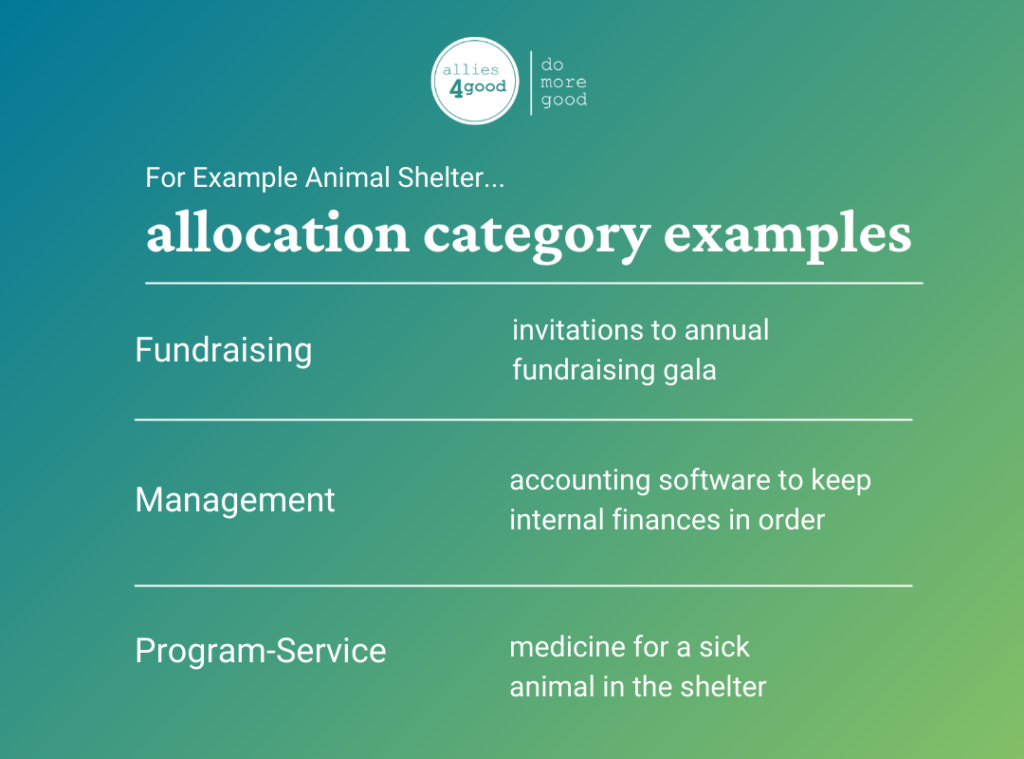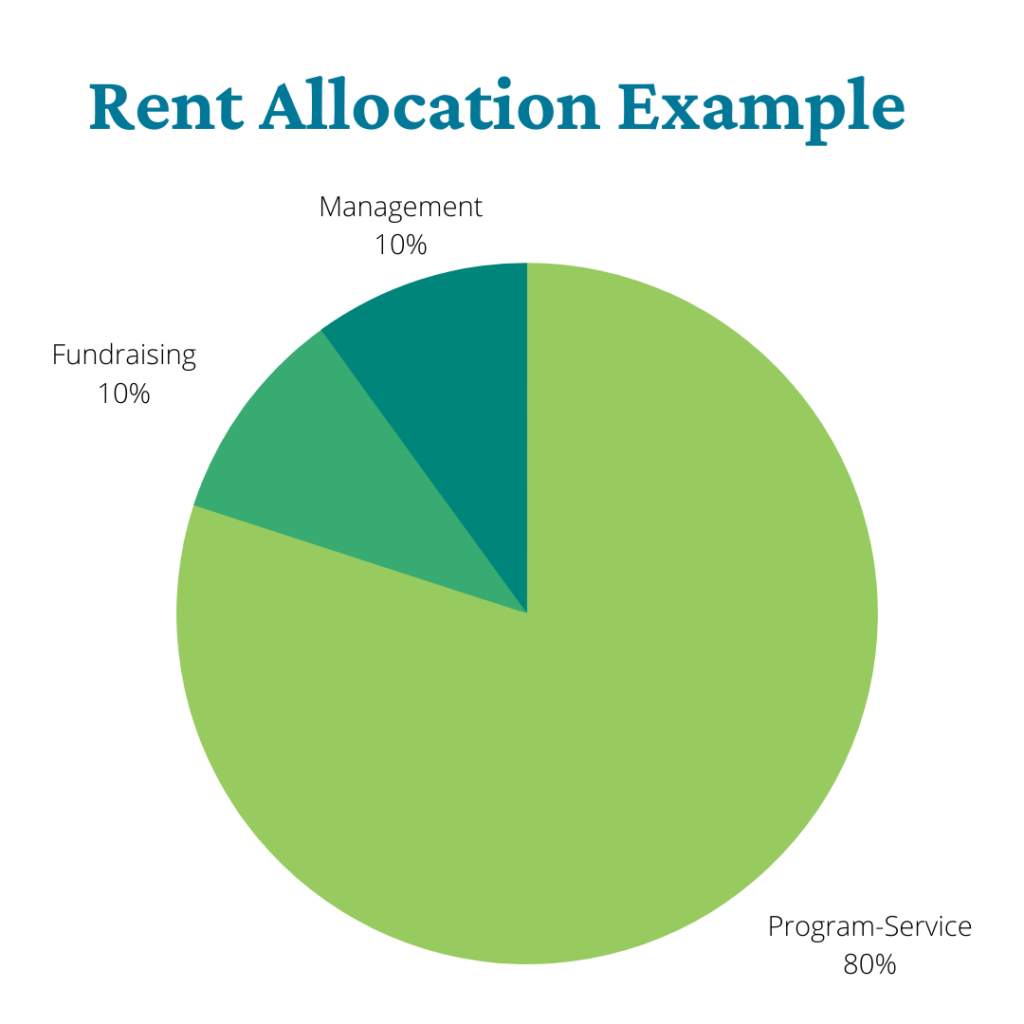Keeping your nonprofit’s finances in order might not be the most glamorous topic, but it’s crucial to ensure you’re able to pursue your mission and protect the organization. We’ll go over three of our tips for ensuring you can keep your nonprofit’s tax exempt status, prepare for financial reporting like a pro, and protect your nonprofit’s finances.
1. Allocate expenses to the categories required for nonprofits.
In documentation of all kinds, from your 990 to your grant reports, you’re often required to allocate expenses to three categories that are specific to nonprofits: program-service, management, and fundraising. Keeping track of this information as the expenses occur is a best practice so you don’t have to do any guesswork when financial paperwork is due.
Some expenses will be straightforward. For example, if your animal shelter spends money on dog food, that would be a program-service expense because it’s directly tied to performing a service for your mission. Or, if you purchase supplies to host a raffle ticket fundraiser, that expense would clearly be a fundraising expense. But some expenses can be split between the three categories.

Here’s an example. Let’s say Charity A, a small tutoring organization, pays $1000 in rent per month. Within the building they rent, their fundraising manager has an office, their Executive Director has an office, and their three tutors use the remainder of the space to tutor the kids in their program and store classroom supplies. Their building falls into all three categories, so their bookkeeper could allocate the expense by splitting it into the categories. She could allocate 10% ($100) to fundraising, 10% ($100) to management, and the remaining 80% ($800) to program-service, because that is how the space is being used.

Many staff salaries should also be split between the categories depending on how much time the person spends performing your mission, managing other employees, helping with fundraising, etc. Nonprofit bookkeeping can get complex with these kinds of allocations, so if you’d like an experienced bookkeeper’s assistance, please let us know and we’d be happy to help.
2. Know your 990 deadline and file correctly & on time.
The most common way nonprofits have their tax exempt (also nicknamed 501c3) status revoked is by not following the rules for filing your 990. The 990 is a tax filing that exempt organizations must complete each year on the 15th of the 5th month after your year ends. If your nonprofit runs on a calendar year, this would be May 15th. Some educational nonprofits run on school years instead, so for example, if your fiscal year ends June 1st, your 990 would be due 5 months later on November 15th.
If you fail to file your 990 on time (or at all) for three consecutive years, the IRS automatically revokes your tax exempt status. So for example, if you fail to file for two years, and then you submit your 990 one day late in the third year, your status will still be revoked. Losing your nonprofit status can make you lose credibility with large grant providers, donors, and corporate partners, so stay up to date on filing your 990s. If you’d like one of our expert nonprofit bookkeepers to complete your 990 for you, please reach out for a consultation.
3. Establish internal controls to keep your funding and your nonprofit secure.
One of the biggest mistakes we see is when nonprofits don’t have internal controls created. An internal control is a procedure or policy put into place to ensure financial and accounting information is kept secure and in-line with local and federal laws.
Think of it this way: Nonprofits aren’t required to have internal controls, but they are much like locks. If you leave the front door of your house unlocked and ajar, you might not get robbed, but your chances become significantly higher. You’ve made it much easier for something nefarious to occur. Internal controls act as your way of closing and locking the door. People can still be involved (or come into the house, so to speak), but there’s a process involved to ensure things are safe.
An example of an internal control we strongly recommend for nonprofits is to have two sets of eyes when writing checks or handling bank reconciliation. Essentially, if one person writes a check from the organization, another person within the organization needs to see that and ensure it’s an approved expense. This protects your nonprofit from one of the most common pitfalls we see. If only one person is handling finances for your nonprofit, it’s significantly easier for money to go missing or be stolen (by that person or others). Adding a second person to the mix heightens security and accountability.
No matter what size of nonprofit you have, it’s crucial to keep your finances in order, both to protect the nonprofit’s tax exempt status and its assets. Cleaning up or untangling a financial mess is often a much larger headache than implementing these practices to begin with, but if your nonprofit needs some assistance, please reach out to us to talk with one of our nonprofit bookkeepers about how we can help.
